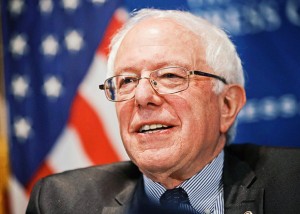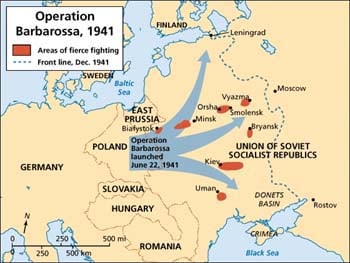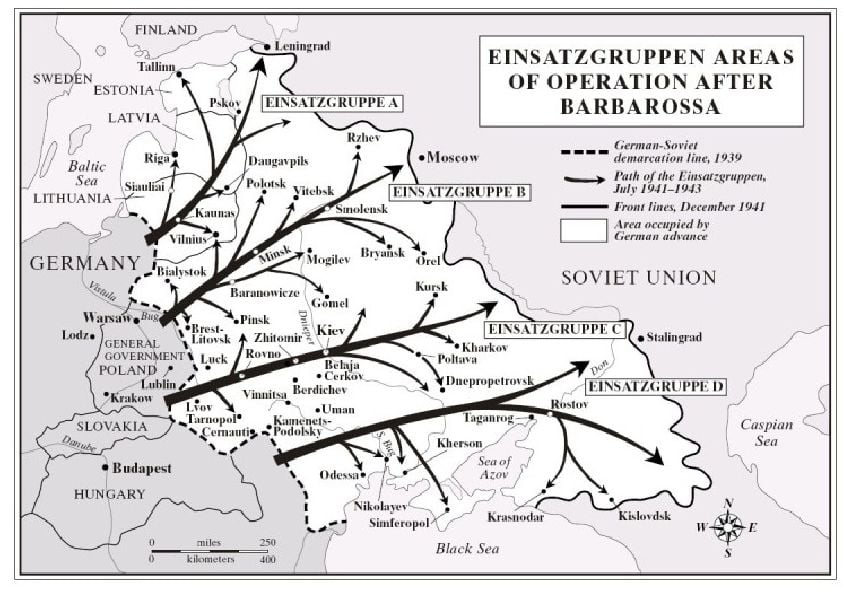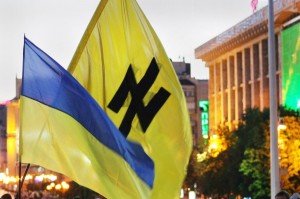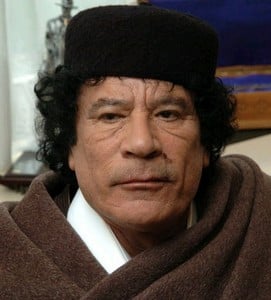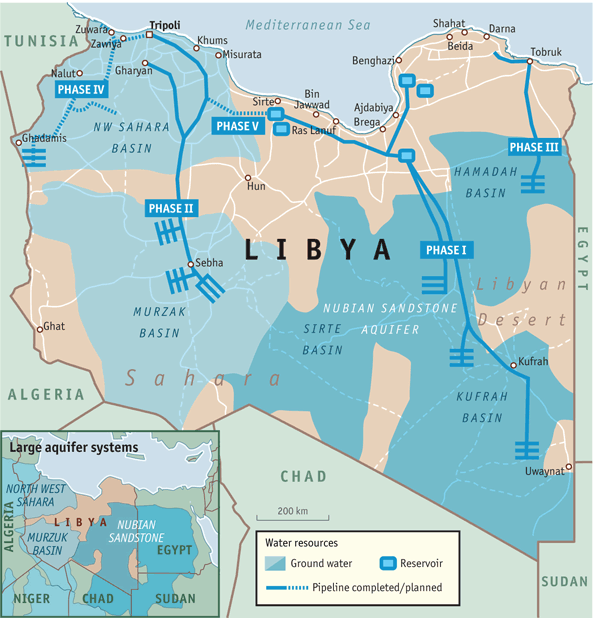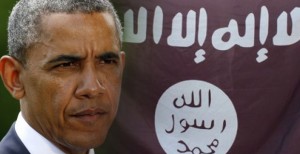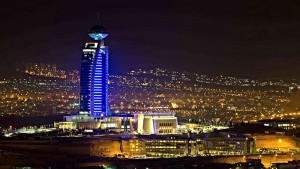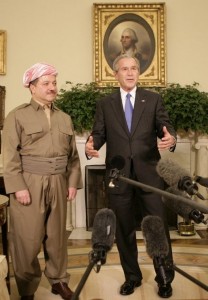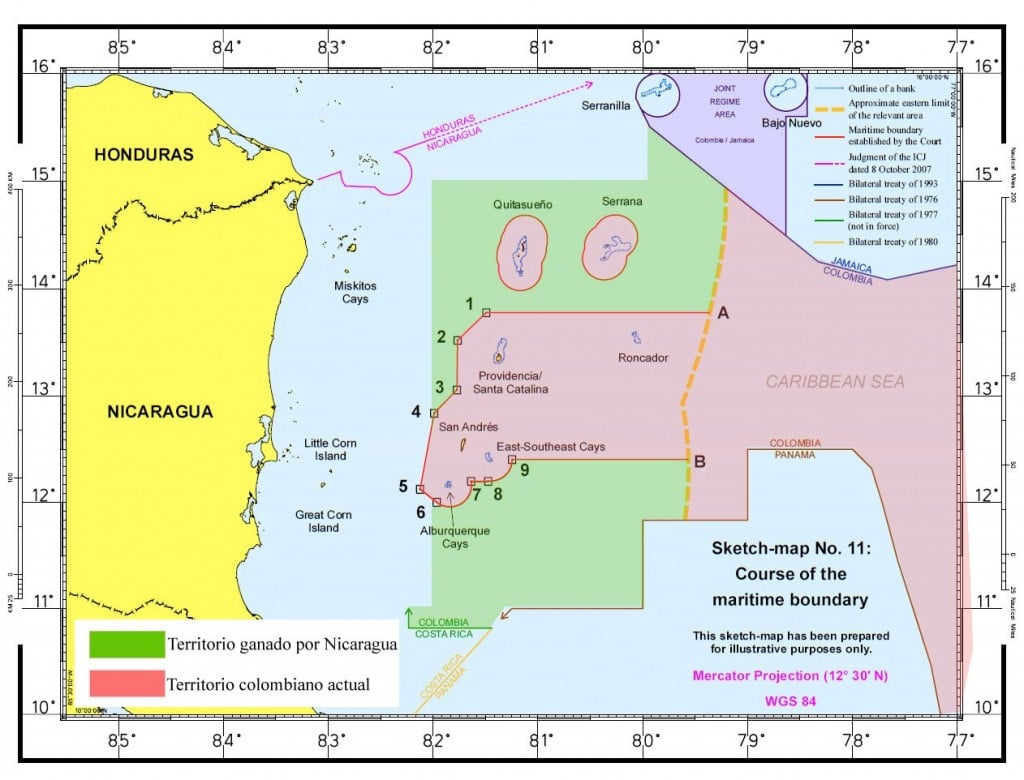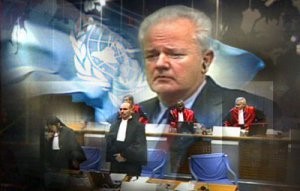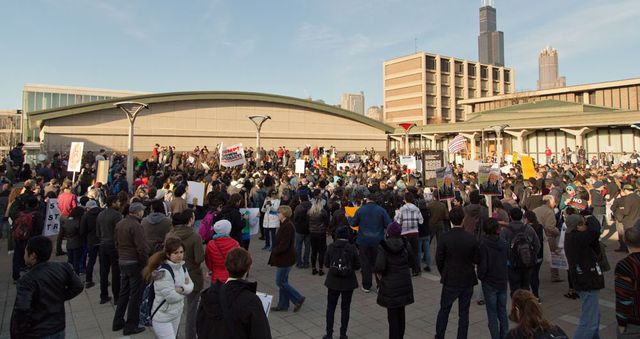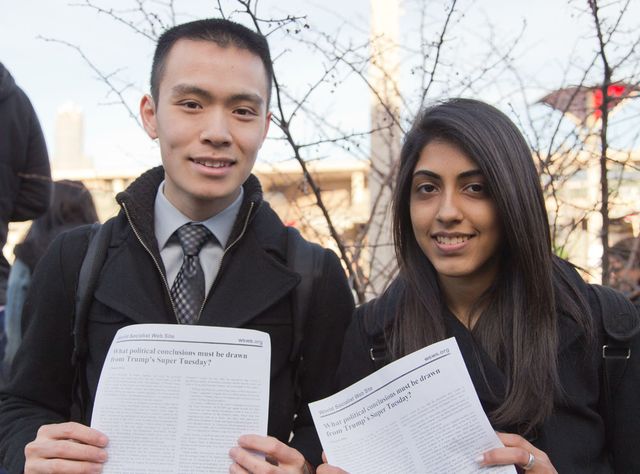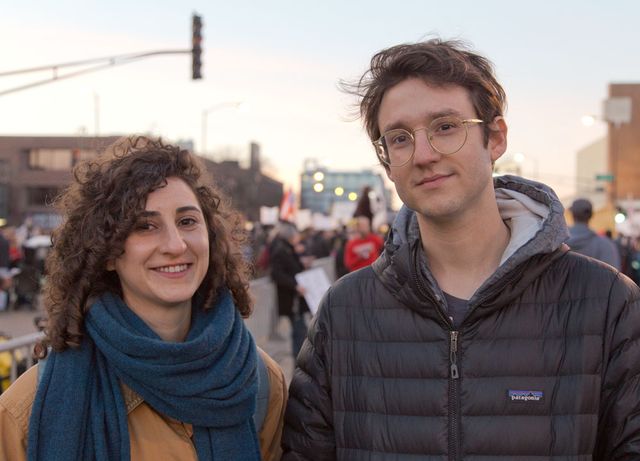This incisive article was first published in February 2015
Seeing through the Official Lies on Ukraine
“We can no longer find any willingness on the part of Poland to conduct serious negotiations with us. These proposals for mediation have failed because [of ] – – Polish mobilization.” (Adolph Hitler, 1939)
These are the words of Adolph Hitler just before invading Poland and then the Soviet Union. I have replaced Poland with Russia (see below) to show the analogy of US and Nazi pretexts.
“We can no longer find any willingness on the part of Russia to conduct serious negotiations with us. These proposals for mediation have failed because [of ] – – Russian mobilization.”
This is not surprising given the very significant role that major US corporations like GM, IBM, Dupont, Ford, Standard Oil, Chase Bank as well as George and Jeb Bush’s grandfather Prescott who profited big as a bank-front director for the Nazi death machine run (not to mention the big Nazi corporations doing very well in the US during and after the war including Siemens and Allianz). There were also the deals German war criminals made to escape post-War trials, providing 70% of NATO’s intelligence after the war and direction to death squads in Latin America.
After the Poland invasion by pretext provided initial Lebensraum of large fertile lands and an open path to Russia for the Nazis, the invasion of Ukraine offered a bigger prize. Ukraine was and remains a breadbasket of the world, not much mentioned in Western reports as US-led corporate globalization now sweeps East. In 1940’s Ukraine, militant collaborators with Hitler’s Nazis arose at every level to assist in the genocide of Jews, German occupation, killing of resisters, and policing of concentration camps. These pro-Nazi militants featuring Stephen Bandera are still idolized today by their neo-Nazi descendents whose leaders have crucial armed-force posts and militias within post-coup Ukraine, as reports from Global Research like Michel Chossudovsky’s The U.S. has Installed a Neo-Nazi Government in Ukraine have observed. Yet mockery of any Ukraine-fascist reality today keeps the memory hole closed. “Dream on”, sneers New York Times International Weekly to the facts without any counter-evidence, and so denial publicly prevails as Ukraine neo-Nazis have armed militias, death squads and the notorious Azov battalion on the ground and cabinet posts in the post-coup Kiev state.
All is “Putin’s paranoia” in the Western media in a pervasive campaign of vilification that holds the story together through all its lies. Charges of aggression and crime against Russia and Putin are daily proclaimed with no evidence, but together provide a pretext for why “Russia must be stopped” and the US-led West Ukraine regime armed with US weapons to “teach Putin a lesson”. The known five billion dollars spent on political destabilization of Ukraine in recent years, the covert special forces, and the direct financing and orchestration of the overtly fascist coup leaders all disappear into the anti-Putin/Russia propaganda field.
At the very same time, the descendents of the Eastern resisters to the Nazi occupation have been resisting the reborn Ukraine fascist forces. Yet they are called “terrorists” now as then and war-criminal attacks on the civilian population and infrastructures by US/Kiev direction have followed ever since the illegal violent coup year ago. For months only abuse and indiscriminate rocket and bombing attacks attacked the Eastern Ukraine civil resistance – until military mobilization occurred with Russian arms and volunteer assistance as well as captured tanks and armaments. That is where we are today with the resistance forces quickly gaining the upper hand against the real aggressor. Neo-Nazi gangs and militias are good at terrorizing and mass murdering civilians, and a mostly unwilling and drafted Ukraine army can pound civilians and infrastructures into hell with artillery, rockets and bombs. But an impassioned armed resistance against them of people speaking the same language and living the same culture will defeat them, and so it has happened here. The February 15 truce has been made because the Eastern-Ukraine resistance and forces have effectively pushed the Kiev forces, fascist militias and mercenaries out of the Donbass/Donetsk region. It was also possible because the US was not directly involved in the Germany, France, Ukraine and Russia meetings..
Is the Truce Just a Space for the US-led Forces to Build More War towards Russia?
No sooner was the truce signed than all onus was put on Russia to sustain it with none evident on Kiev or its US master. Is it just another pause before more weapons, special forces and advisers come in to prop up the US-constructed coup state in Kiev? Certainly that is what the West-Ukraine puppet leaders and US war party are pressing for.
Now most of all, the connections to the Nazi past in Ukraine and the US itself go down the memory hole. So too does the recent warning by Italy’s former Minister of the Economy, Giulio Tremonti, about the new forces at work in Europe – “financial fascism, white fascism” (translated from his apparently suppressed 2012 book, Emergency Exit: Ending the Tyranny of Finance). In short, all the degenerate trends across big bank dictatorship, corporate oligarchies running Europe, ever more armed forces against ever more dispossessed adversaries, squeezing workers wages and employment without limit, devouring attacks on public sectors and programs across nations to privatize their revenues, and now outright civil war in Ukraine are at work together in a forming a situation which is hell on earth in the long social democratic Europe before 2008 (as diagnosed in global depth by my The Cancer Stage of Capitalism: From Crisis to Cure). Ukraine is the where the war of movement and land clearance is focused now because the greatest resistance yet to the carcinomic program has arisen here.
Again we might return to the Nazi past to find connective threads of meaning. US and Nazi justifications have much in common. Before being able to publicly justify Nazi Germany’s military extension into East Europe, Hitler had to have a pretext, to satisfy public opinion. This was managed by Nazi forces posing as Poles on 31 August 1939 attacking a German radio station, Sender Gleiwitz, inside Germany near the border. All went as planned. And so too the movement on to Ukraine and Russia unrolled, always to “stop aggression” – the very same words and reverse pretexts. And always resisters were “terrorists”. These central concepts are at the core of the official stories of Nazi Germany as well as the US. But not only Eastern Europe is thus subjugated. The US has moved far beyond where Hitler expanded, from Iraq to Honduras to Venezuela to Vietnam – where does it stop? Always the question is, “where will Putin stop?” None stop to reflect that no Russian regular forces have moved beyond Russia’s borders, as repeatedly divulged under questioning by a Ukraine intelligence spokesman, the Chief of Staff himself, General Muzenko, and Ukraine’ s spokesman, Major Alexander Raran, at truce time . On the other hand while continuously proclaiming the lie that “Russian troops have invaded Ukraine”, US armed forces move across borders around the world. Where do they stop? They threaten force everywhere, and one can always tell that a people is resisting when the US embargoes, threatens or bombs them – here with doubled-troop deployments across all Russia’s Western borders.
The difference from the Nazis is the normal subjugation by financial and trade levers, and slower motion of armed forces against resistance. World rule has already been largely achieved. But Putin, Russia and – most of all – Eastern Ukraine itself have drawn a long overdue line. Russia now is no longer an open looting basin for transnational oligarchs with a drunken puppet Yeltsin in charge. Armed resistance on the ground from the Donbass region has stopped the world’s most lethal ever war-and-money machine from taking all of Ukraine by a US-led and neo-Nazi enforced coup. The Nazis themselves would have kept going. The US does not, and the fascist rump of Ukriane is neither popular nor competent. But the war party is everywhere demanding Russian blood for support of the resistance. It all started with Kiev-led sniper mass murders in Maidan square, and was whipped further into frenzy at the downing of a European-filled passenger jet. Yet Putin and Russia have not been so easily blamed in the Internet age where facts come out despite corporate mass media monopoly and NATO dominance.
There is no need to idealize Russia or Putin. Yet they do show exceptional capacity to withstand never-ending terror and attacks from the West, saving the world from Napoleon, Hitler and – so far – the US war state going East today. The evidence of “Russia’s aggression” – armed invading or civil destabilizing of other countries against international law – is pervasive for the US, but sorely lacking in the case of Russia. Knowledge here can win the day. The mass murder, destitution, and oppression in Europe is becoming ever better known, especially in Ukraine itself, and so too the Nazi connections. Once people awake to the worst in fact, they will not go along with the next big-lie pretext for aerial war and destroying another society.
How the Quality Press Lies for the Official Story to Stay Believed
Today on the eve of the first anniversary of the US-led fascist coup in Ukraine and a new truce agreement, the anti-Russia propaganda peaks as if to ensure that any future violation is blamed on Russia. The underlying US-EU corporate plan to pry open Ukraine and Russia downstream as undefended looting basins is kept quiet because it is not supported by any public. And those who serve the program do not fight so well – as we have seen in Ukraine – when confronted by people fighting for their mother country and community lives. That is why the call is so fervent from the war party to get US weapons to the Kiev puppet state. The official story, of course, is opposite. The weaker is, as always, accused of being the despotic villain that must be brought under control, here a country with a declining population two-thirds the size of Brazil.
Even the academic press gets into the reverse blame game. Yale University Press recently published a book – Ukraine Crisis: What It Means for the West – which was year glowingly reported in the New York Times, Wall Street Journal, USA Today and Guardian Weekly (among others) despite its reversal of the most basic facts of the Ukraine crisis. The serial mass murders by snipers which began Ukraine’s violent coup d’etat one year ago are falsely attributed to the pro-Russian President who fled the coup, even though EU evidence has itself shown Kiev agency in the mass murders and the US-led coup leadership refused to investigate (as documented ahead). Yale author Andrew Wilson also asserts with the corporate media that the shootdown of Malaysia flight MH17 killing 298 passengers was by a Buk missile “from Moscow”. Yet the European Union‘s Organization for Security and Cooperation (OSCE), the chief investigating body, has revealed no such evidence while the plausible possibility of a covert black-op to blame on Russia or the Donetsk resistance is blinkered out. The tragedy was certainly not in the interests of the resistance because it gained nothing and almost got war declared on it by NATO as Kiev has aimed for all along. As always, again, the first question of forensic justice – cui bono? – is never asked.
As ultimatums and embargoes from the US and the EU continually escalate blaming “Russia’s aggression” without sustainable evidence ever produced, the war-mongering by the corporate media simultaneously increases to foment war fever. None seem to have processed the undeniable fact that the neutrality and non-arming of Ukraine was promised by NATO and the US Secretary of State James Baker in 1991. Still the war party’s favorite liars like John McCain and the New York Times declare unsubstantiated war-pretext accusations daily. So the question arises: What will be the next big-lie pretext for NATO and US armed intervention?
State and media war mongers give a hint on what is being cooked up. Consider this paradigm example. The iconic British Guardian and its eminent writer on political affairs, Timothy Garton Ash, headline a February full-page story just before the new truce and coup anniversary, “Putin must be stopped. Guns will be essential”, the headline screams. Why? “Putin is the Slobodan Milosevic [convicted war criminal] of the old Soviet Union [KGB communist]”, Ash proclaims. Then he further alleges with no evidence that Putin and Russia only “spew anti-Western propaganda” and “if the [NATO] threat did not exist Russian television would invent it”. We may observe here another perfect reversal of Western propaganda operations onto the leader and weaker society it is attacking. Impartial observation of the Western press will find in fact continuous slanders at will, while Putin and RT are surprisingly polite in comparison. In general, there is no standard of truth or slander to inhibit free-roaming hate and falsehoods against any foreign force whatever the facts of the matter. Mass sales of product and expensive advertising also rise, and – key to the whole system – the audience is churned to aggressive diversion from their own oppression.
The Guardian story reproduces the old lies as well floating new ones. Putin uses “energy blackmail” (that is, requirement for overdue payments for gas in the billions of Euros), and brings only “more blood and tears” to peoples (although staying on its borders while the US is war-gaming over 6000 miles from Washington). The New York Times feeds in with war propaganda from the other side of the ocean on the very weekend of truce (NYT Weekly, February. 14-15). It dismisses Russia’s encirclement by escalating US-led NATO forces in six countries and the Black Sea as a “preposterous fable – – to generate hysteria and buttress Russian aggression in Eastern Ukraine”. Breathtaking erasure of the most basic facts and reverse projection onto the designated Enemy here combine in a paradigm illustration of the big-lie system at work.
At the same time, news stories have silently shifted to a new slant – to finally report the civilians and infrastructures of Eastern Ukraine being one-way shelled and bombed to ruin by US-led Kiev, but with no identification of which side is aerial bombing and shelling civilians and civilian targets. In this way the US-led West-Ukraine forces that perform all of the aerial bombing and – until recently – almost all of the artillery shelling of public and civilian structures and citizens are collapsed into the general fighting that is all blamed on “Russia’s aggression”. The same article under the bold-print heading of Intelligence describes the denial of “all the Russian forces” as “nonsense” and a “figment of the imagination” although as we have seen the denial has come under questioning from the top of the Ukraine armed forces and intelligence spokesmen themselves. The lying propaganda techniques are a study in their own right. The invariably feature the elimination and reversal of facts as their only consistent method.
The really unspeakable fact is erased altogether, but lies deeper still. The age-old Russian-speaking minority of Ukraine – almost the same in language but not beliefs – has been subjected to the biggest ethnic cleansing operation of the millennium. A now estimated 1,500,000 people have been driven from their homes by one-way Kiev bombings and bombardments of even hospitals, schools and public buses while stopping all access to Eastern citizens means of existence as far as possible (not done by Putin even in the height of the US-sponsored war in Chechnya). The distinction between the millions of Eastern Ukraine’s Russia-speaking victims by US-led Kiev bombing, terror and life means deprivation and those in Kiev-ruled Western territory who are untouched by any rebel bombs and terror is simply abolished. This is how a genocide of the Eastern Ukraine people stays in motion while all that is reported is “Russia’s aggression against Ukraine”.
The Unseen Genocidal Program of the US-Led Coup Government
Almost down the memory hole is the precipitating cause of the Ukraine civil war – a spectacularly violent neo-Nazi-led coup overthrowing the established elected federal government of the Party of Regions – the now collapsed federalist party supported by most citizens before the US-orchestrated coup. The federalist option was thus annihilated to cause the uprising of Eastern Ukraine which, accordingly, was targeted for annihilation too. There have three main methods for this genocidal clearance operation whose people produce 95% of the country’s coal and most of its exports as well being rooted in a different language, culture, social organization and political-religious belief system. The first has been cultural dispossession and erasure – abolition of past language rights and federal accountability to the region’s people, the initial spur of the East’s uprising along with the neo-Nazi leadership of the coup state. Nothing but worse to come was promised by this stripping of cultural and regional rights and institution of a US-led extreme-rightist state led on the ground and in cabinet posts by open neo-Nazis with US support, along with a banker puppet as prime minister who bawls “terrorists” and “Russian aggression” every other sentence. I bracket out proper names to ensure the underlying design is clear because submergence in alien names is part of the cover-up of every deciding fact by the official story.
The second level of genocidal method is armed-force terror by fascist gangs and militias on the ground committing atrocities combined with indiscriminate one-way aerial bombing and relentless artillery bombardment of civilians and civilian sites, vehicles and infrastructures – never reported in Western corporate media even as the fleeing people multiplied to far more than ISIS proportions. The third and most unrecognized method even by critics has been deliberate mass starvation. It has proceeded among other instruments by cut-off of all social security and pensions to Eastern citizens, freezing of bank accounts to be inaccessible, stoppage of electricity, and proclaiming “Russian invasion” every time food lorries came in to provide water and food to the starving people, with NATO’s Supreme Commander war-mongering daily about Russian troop build-ups and intentions to invade. Meanwhile every more sanctions and manipulations of global markets to break Russia’s capacity to assist or to defend escalated along with pervasively lying propaganda (as illustrated above). Most deeply, all the dots remained unjoined by any public observation – with for example, CBC and the NDP echoing the official story daily. .
Given the Russia-speaking citizens who have led the revolt against the fascist-led coup and its US godfather, one could see a preconscious reversal of history back to Nazi-led dominance, oligarchy of the rich and father cult in Ukraine, and hate propaganda as again the moving force of public opinion. As every turn of aggression projected onto Russia has shown for a year, economic war on Russia and cumulative total war machinations have formed with the EU and other satellite corporate states in a geo-strategic trajectory interested in “peace” only as space for more war of expansion and ruin, automatically reverse-blamed on Putin to sustain it. It is difficult to deny the operationalization of the familiar grand objective of totalizing world rule always blamed on the resisters against it. Certainly as in other US-orchestrated “regime changes”, official and media attention blame the very party who has been attacked and never report the catastrophic consequences on innocent people’s lives, even when the terror and destruction becomes genocidal in scope.
Certainly the US-orchestrated “regime change” in Ukraine and continuous subsequent war crimes never reported has led to the worst large-scale mass murdering in Europe since the Nazis, already beyond Bosnia – another US-led expansion of transnational corporate rule backed by NATO bombing. The US-orchestrated “regime change” in Ukraine and its war crimes never reported in the Western media has already executed a very large-scale homicidal planning which none dares to name in public. Consider the dimensions – one-way aerial bombing and indiscriminate attacks of civilians and infrastructures in the Donbass area alone, mass starvation of millions of mainly Russia-speaking citizens, armed-force land clearances and appropriations, one-way mass murder atrocities by the US-led side, documented torture and rape by neo-Nazi death squads and the infamous Azov battalion, and ever more hundreds of thousands of people forced to flee their homes and region in East Ukraine but nowhere else. A mounting ethnic cleansing’ has already happened but is still unspeakable to report in the West.
Instead month after month the audience has been conditioned to revile the new hate object of Vladmir Putin, and thus to justify any life-destructive action at all in East Ukraine. We have seen this movie before. Always focus on the constructed Enemy to keep all eyes of what is being done by the US with allies to destroy millions of peoples’ lives. It is the DNA of this system. “Economic war” too is ratcheted up to ever new levels on Russia to destroy its collective life base, always the underlying target in the society-wrecking program of US-led corporate and NATO globalization. It is a death machine.
Meanwhile the immense assets in line for military-led takeover by the US and allies are excluded from discussion. It is projected instead onto Russia’s “expansionists aims”, while US-led NATO military operations threaten war on all Russia’s East-European borders, ever more military training and the deployment of special forces in coup-state Ukraine, transfer of war instruments and directors, contract-violating sanctions strangling the Russian economy, and even manipulation of global financial and oil markets to “stop the Russian aggressor”. Yet not just the bombs and artillery terrorize the victims of Eastern Ukraine There has been a choking off of their foods, electricity, social supports and pensions, medicines, bank accounts, humanitarian aid, and even freedom of movement – with mandatory passes and check-points like Israel and unpredictable bombardments of citizens with no military target near.
All the while thunderous denunciations of Putin rise to divert all attention from this one-way war on all fronts as the war crimes multiply by the US-Kiev axis with Harper joining in and warmongering for more. Peace talks are revived in February to “give Russia one more chance” after the Ukranian representative failed to show up at the last talks in Minsk. As peace is hoped for by the peace and hope president, ever more new NATO and US war forces are installed and called for around Russia and the Ukraine “to prevent Russia’s continued aggression”.
What about Russia’s Seizure of Crimea in Violation of International Law?
The war might end if the new truce terms are acted on by Kiev – namely that Kiev-governed Ukraine only regains control of East Ukraine “after local elections in Donetsk and Luhansk and after a full political settlement (deadline end of 2015)”, plus the further conditions of “humanitarian aid; restoration of full economic links with Donetsk/Luhansk, including welfare payments and banking services; Ukrainian state to help develop Donetsk/Luhansk and regions’ co-operation with Russia”.
These terms seem minimally reasonable for any democratic social order. But their deprivation and restoration have been long suppressed reasons for the civil war. It is a good sign that they are finally made public, if the media carry them, and finally restored to stop the war, if the US-led Kiev wants to.
Yet so far there is little evidence of either commitment on the US side. So far all there is only talk of “Russia “and “the separatists” breaking the truce, as always. The terms themselves expose the lie that Russia is only after expansion. The terms allow for no such expansion. No Western media will pick up on this, I predict. It explodes the official story they have been running day in and out for a year. Yet still the terms of truce are there for the first time, and the agreement was brokered by Germany and France in the EU. So it is big advance even if it is doomed to violation under the usual false pretexts. What will come out strongly in the days ahead, I predict, will be that “Russia has won by still having marched into Crimea and seized it by force”, “Russia has violated the sacred territorial integrity of Ukraine and gotten away with it”, “Russia has received a big reward for its aggression”, “Russia has been encourage to go on expanding like Hitler” and so on and on. The millstone of Crimea is still around Russia’s neck, the war crime of invading another nation’s sovereign territory remains, the sanctions must stay on Russia and weapons be provided to Ukraine , and again the justifications for continued economic if not military war remain in place to be repeated ad nauseam. So it is good place to revisit Russia’s re-integration with Crimea to consider how much of all this holds up under scrutiny.
“Russia’s brutal invasion and seizure of Crimea” is, after all, the core charge on which all others rest as the grounding fact to justify the demonization of Vladmir Putin and Russia in Ukraine. The justification itself is never questioned within Western state and media circles. In Ukraine, any questioning of Russia’s crime here – any “public denial or justification of the Russian military aggression against Ukraine”, may now land one in jail. Informally such siding with Russia or the resistance may lead to execution, with many hundreds have already so murdered by Kiev regime’s killer gangs and militias with no Kiev investigations of them.
In the wider world, Russia’s re-unification with Crimea with massive electoral support – neither fact ever allowed discussion in official state and media circles of the US and its allies let alone Ukraine – is sufficient to condemn it to ruin by blanket economic and military attacks. Ever increasing threats of NATO buildups and war preparations as well as war-like embargoes and violations of trade contracts have already happened because of “Russia’s armed seizure of Crimea” and “gross violation of international law”
Of course what the official story fails to report is that Crimea has been an historic Russian port and strategic peninsula for centuries since Catherine the Great. The Nazi-like narrative further ignores the fact that Ukraine’s brief interregnum occurred by a 1954 decree from Nikita Khrushchev, a Ukrainian leader who was once led the Soviet Union whose laws now apply nowhere else. Observe that this is “the sacred territory” that Canada’s toxic PM Harper has sworn will be retaken in pledging “family” loyalty on the September 18 visit of billionaire President Poroshenko. Observe too the patriarchal-mafia intimations.
The claim that Russian soldiers “poured into Crimea to seize it” is, however, perfectly false. In fact, it was a voluntary referendum with demonstrated EU Parliamentarian-observing its overwhelming public support for re-unification with Russia. No evidence suggests that the already-present Russian soldiers involved were not models of presence without abuse and threat. No doubt many Tatars wanted no part, but the soldiers did not arrive by instruction from the Kremlin “to overthrow with brute force”. They were already a long time in Crimea under contract with Ukraine and in fewer number than the undenied contract allowed. No-one disputes any of this. Diversion from it is the game, and lies about Putin is the strategy that sustains it. An 83% voter turnout elected re-integration with Russia by over 90%. No counter-evidence disputes this, only unsubstantiated innuendos.
In contrast, Poroshenko’s post-coup election in October 2014 was by a fraction of Ukraine’s total electorate with most of the Russia-speaking South and the East unable to participate. His October 26 snap parliamentary election was in the conditions of more than a million citizens driven from their homes, oligarch and foreign money pouring in to indoctrinate voters, and anti-communist and anti-Russian mass passions inflamed to terrorizing proportions. Under post-coup law, the Kiev regime’s sacred claim to Crimea is criminal to disagree with and liable to social destruction – the “new Western democracy and freedom”.
Also erased from the official story are the facts that the Supreme Council of Crimea referred to the United Nations Charter and “the right of nations to self-determination” (Article 2, Chapter 1). This is the very right Ukraine invoked in seceding from the USSR in 1991, and the same right invoked for the separation of Kosovo from Serbia – which was in fact enforced by NATO bombing. Further erased is the UN International Court ruling in July 2010 that “general international law contains no prohibition on declarations of independence”.
Facts and laws are not all that is automatically reversed in the official story and repeated like 2 + 2 =4. The contrast between Russia’s governing treatment of Crimea and the coup government’s treatment of the Ukraine people is also very revealing. While the oligarchs are setting up the Ukraine people to be permanent debt-slave in exchange for banker-corporate control over the country’s life capital, Russia is far advanced in upgrading the public infrastructures and life security of Crimea as fast as possible.
The Underlying Geo-Strategic Pattern
The underlying global pattern is that any organised force standing against NATO-backed corporate globalization is selected for attack and dismemberment. We have seen this from Afghanistan to Syria in the last decade. NATO is the combination of all the white world powers that formerly warred against each other. Now they have a common cause which has switched from the wartime-generated welfare state leading the world to the very polar opposite under the same name – disemploying, defunding and skinning everyone alive without private money stocks from Spain and Greece to Ukraine.
The major strategy of rule is to divide the population into warring sides. The Republican Party has no other evident policy in the US, nor does the US itself abroad. So civil war was planned for Ukraine from before 2000 as reported by Germany’s former State Secretary for Defence, Willy Wimmer, who has since made public his meeting with the US State Department in Berlin on May 2, 2000 when a map was presented regarding NATO’s future expansion to include the dividing of Ukraine into Eastern and Western regions. Five billion dollars of US foreign-operations spending in Ukraine from 2008 (acknowledged to a business audience by Assistant Secretary of State Victoria Nuland after the Kiev coup she directed) was then directly invested in mass anti-regime circles and propaganda and financial support to key agents of the eventually violent overthrow. This was not the intention of the mainly peaceful and popular demonstrations before February 2014 against the government of Viktor Yanukovych, a corrupt president in a long line. But a violent coup was opted for instead led by neo-Nazi terror on the ground. The terror was then projected onto the government to justify overthrowing it, and then onto the resistance in the Eastern regions, Russia and Putin as patsies for Western public opinion.
As always in US-orchestrated “regime changes”, official and media attention turns to blaming the designated enemy while the catastrophic consequences of the violent overthrow are blinkered out. The Ukraine “regime change” has led to massive bombings of civilians and infrastructures in the East, deliberate starvation of millions of citizens, and armed-force land clearances, murder, torture and rape by neo-Nazi death squads. This large-scale ethnic cleansing’ has been altogether screened out of Western state and media reports, while the official story has daily flailed Putin as the villain and the cause of all the problems.
If we look forward and backward from the “weapons of mass destruction of Iraq”, the “genocidal plans of the dictator Gadaffi”, and “Assad’s chemical weapons” as a pretext for bombing another society with major strategic and economic resources to be pried open, we see that the pretexts always turn out to be false. But in every case a society formerly independent of US dominance and doing better than neighbours is torn apart and opened to transnational corporate invasion.
Thus not long after US-led bombing and destroying of Iraq and Libya on false pretexts, another story for more war and bombing arose. In Syria which followed a similar pattern, president Assad was “gassing his own people” and “violating international law”. This story went all the way to a White House plan to bomb Syria’s civilian infrastructures to correct the problem, as in Iraq and Libya – – and as in Ukraine if the war party had won. Even with Assad’s “war crime”, the truth found by multiple analysis was that “kitchen sarin” manufactured in Turkey and crude-missile lobbed by the al Nusra jihadists allied with the US and funded by Saudi Arabia and Qatar (the precursor of ISIL) was the source of the gas massacre – as Seymour Hersh finally made public. But neither this fact nor the plan to bomb Syria disappeared. The mass media including the New York Times continue to broadcast “Assad’s use of chemical weapons against his people” while erasing Hersh’s research from the record.
As long as all fault is projected onto the official enemy and the facts repressed, there is no release from the perpetual war for economic and military resources for more global strategic control and transnational corporate exploitation. Unlike British imperialism, there is no advance of civilisation for the ruined society. Life capital development is reversed, and socioeconomic genocide is the effective outcome.
How the Ukraine Was Turned Into Civil War
The initial demands from the Russian-speaking Donbass region of East Ukraine centred in Donetsk were not radical. They were rather like the demands of francophone Quebec that have been successfully negotiated in Canada – minority language rights and federal status allowing substantially independent government. Yet minority language rights were immediately revoked by the coup leaders. Past federalist status for the mainly Russia-speaking region was warred upon from the start with a new governor appointed from Kiev. Neo-Nazi gangs then started terrorizing Russian speakers in Ukraine as soon as the coup was completed – with, for example, mass murders of hundreds of unionists and Victory Day celebrants within months.
Bear in mind that the East Ukraine resistance was from the same region that resisted the Nazi invasion in the 1940’s. Now as then, only one side bombed civilians, deployed starvation tactics, and mass-murdered civilians. The official story is that Putin and Russia have led all the criminal aggression in Ukraine, but the coup murders and atrocities, the indiscriminate military bombing, and the embargos against income and sustenance all came from the US-led West Ukraine side. They had already forced over one million people to flee their homes by September of 2014. This was documented by the UN High Commission for Refugees before last summer was over, but unreported by the mass media or Western leaders who only bayed insults and threats at Putin. .
Violent overthrow of a people’s elected government, bloody mass murders by regime street gangs, criminal bombing and shelling of civilians and social infrastructures, mass starvation policies, blaming victims as “terrorists” if they resist, anti-communist hatred a moving passion throughout (and hushed-up anti-Semitism), and a regulation on hand for the slave labour of Eastern citizens – all the ignored facts eerily recall the Nazi invasion and nationalist Ukrainian collaboration in genocidal operations decades before. Certainly, a generic pattern remains constant across contemporary history. One society after another is torn apart. Not only is the society decapitated, as in Ukraine to begin the crisis, or Libya or Iraq, or as demanded in Syria. Its civil bonds are rent asunder, its social life supports are stripped, its productive base is run down or destroyed, its government is made a strategic vassal and permanent debt servant to foreign banks, and its environment and resources are hollowed out.
We may recall that Russia’s “plot to rule the world” was the storyline to explain the Cold War, with few noticing that world rule went the opposite way once Russia had its GDP halved in the grand capitalist experiment under the drunk Boris Yeltsin. This helps to explain why the US-led coup d’etat in Ukraine for another neo-liberal feeding frenzy has been resisted by force of arms. Before the coup, as US Assistant Secretary of State Victoria Nuland told a business meeting afterwards, $5 billion of public money was invested to turn Ukraine into US control. The method was a familiar one – ever-rising civil destabilization and US alliance with internal extreme-right parties, in this case, parties descended from Ukrainian Nazis supporting Hitler, Pravi (Right) Sektor and Svoboda (“Freedom”, formerly “Social Nationalist Party”).
Although Europe was near brokering a peace agreement, Nuland went ahead with the coup, hand-picking Arseniy Yatsenyuk as putsch prime minister and instructing him to consult with Oleh Tyahnybok (whose Nazi salute is well known on the Internet) “at least four times a week”. When reminded of the EU peace talks, she responded in undenied leaked reply, “Fuck the EU”. This US-orchestrated coup then occurred after three days of sniper murder and chaos were falsely blamed on the elected government to overthrow it.
In fact, the sniper murders of 21 people in Kiev in February 2014 which precipitated the bloody coup and started the civil war were part of the larger strategic logistics. The EU’s Foreign Minister’s verified and recorded conversation with Foreign Minister, Urmas Paet of Estonia, speaks for itself. He reported that all 21 murders were (his words) by “the same type of bullets” and from “the same handwriting” which could only be from “the new coalition [in Kiev] which does not want to investigate what happened”. Nor did any Western press.
Reverse projection is the master psych-op at work. Blame the enemy for what the US is doing as the reason to attack it. Even if the evidence shows a big lie in motion, only a few know it and it will not be reported in the corporate media. In fact, such serial mass murder as the Kiev sniper killings is grounds for prosecution of crimes against humanity under international law and prosecution by the International Court. But so far such due process of law and criminal prosecution have been deployed only to serve the unspoken global agenda while war-drums beat against all those who draw a line against it on the ground. The deprived become the Enemy whenever they fight back.
The post-coup words of former “Orange revolutionary” and gas oligarch leader of the Fatherland Party, Yulia Tymoshenko, are revealing of the mind-set long at work leading the Ukraine and denouncing Russia. When she was released from jail for criminal embezzlement of state property in post-coup Kiev, she said: “Take up arms and go and wipe out these damn katsaps” [Russian minority] – – – so that not even scorched earth would be left of Russia.” The Russian-speaking city of Luhansk was levelled months later by artillery, rockets and air-bombing of civilian centres, schools, hospitals and water and electricity infrastructures, with 350,000 forced to flee from this one city alone by the Fall.
The Global Stakes of the Ukraine Crisis
Harper rule in Canada has joined the war-mongering genocidal game in character – refusing to respond to any diplomatic correspondence from Russia, blocking information flows, and proclaiming inflammatory falsehoods. The profound common life interests at stake are unnamed by all. Ukraine is the breadbasket of Europe and its biggest landmass. Public assets are all on the privatization block. Slash-and-burn budgets are set to service new unpayable debts to foreign banks with ample collateral on tap. Ukraine has large and untapped fracking-gas deposits, and it provides new strategic military control up to Russia’s main border and colossally rich natural resources on the other side. Yet the operation of reverse blame goes from Iraq to Libya to Syria to Ukraine to Russia in one society destruction to the next. With one-way pervasive media abuse, cumulatively destructive sanctions, and incremental arming of neo-fascist-led Ukrainian forces, vast global power and treasure are at stake beneath discussion which affect us all.
The collapse of Ukraine’s GDP by 60% after 1991 is evidently not enough for the ravenous appetite of US-EU corporate globalization. While mass media and states chorus “Russian brute force” and “what Hitler did back in the 1930’s” (Hilary Clinton), reverse projection is as usual the syntax of blame. The fire-bombing of the House of Unions in Odessa by regime gangs (May 2) and again in Mariupol on the anniversary of Victory Day over the Nazis (May 9) were major mass murders without arrest of any of those responsible on site, and all has been unreported in the Western media. Yet PM Yatsenyuk with US support keeps proclaiming “Russia’s war to take Ukraine”, and the US war party and its Canada servants lap it up. Public amnesia rules by the media selecting out of public view all facts not in the ruling script.
A new truce has now been entered by EU and Russia initiative with terms to resolve the US-orchestrated civil war. All voices of the official story wonder whether “Russia and the separatists” will obey its terms. Yet when we examine the record of international law and agreements, especially life-protective promises and agreements, who do we really need to worry about as a violator of them? The record tells us very plainly.
The US state has refused to ratify the International Criminal Court to uphold the law against war crimes and crimes against humanity, and it has publicly repudiated the Court’s right to investigate US criminal violations including the “supreme crime” of initiating a war of aggression (including the Clintons). While the US perpetually invokes international laws to blame others, it repudiates any life-protective law applied to its actions, or its key ally Israel. In truth, the US has systematically undermined virtually all international laws to protect life – treaties and conventions against landmines, against biological weapons, against international ballistic missiles, against small arms, against torture, against racism, against arbitrary seizure and imprisonment, against military weather distortions, against biodiversity loss, against climate destabilization, and even international agreements on the rights of children and of women.
The record of US war crimes and crimes against humanity, against human and planetary life itself, is suppressed. It should be foremost in the minds of those observing what happens next in this potential world war situation or – perhaps at last – non-US resolution.
John McMurtry is a Fellow of the Royal Society of Canada and his work is published and translated from Latin America to Japan. He is the author and editor of the three-volume Philosophy and World Problems published by UNESCO’s Encyclopedia of Life Support Systems (EOLSS), and his latest book is The Cancer Stage of Capitalism/from Crisis to Cure.









